

Review: Nice AM2+ board with BIOS quirks
Today we take another look at a mini-ITX solution for AMD AM2+ Platforms. We were impressed with the J&W MINIX board, now we check if Jetway can do the same.
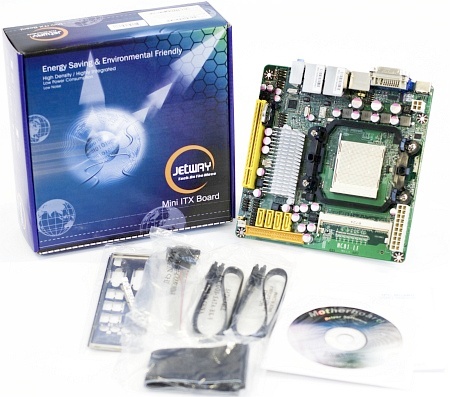
While Jetway is not taking the high-end approach, this board still is an all solid capacitor design, which is still quite rare in the mini-ITX market. Instead of using a PCIe slot, Jetway just used a PCI slot. This will be enough for an HTPC machine, but will prevent you from putting in a more serious graphics-card. It has plenty of options: Four SATA II connectors with RAID support, two eSATA, 4x USB 2.0, 2x Gb LAN, VGA, DVI and HDMI. Sadly, Jetway opted only for a 2.1 sound solution, but the HDMI output is capable of 5.1 sound.
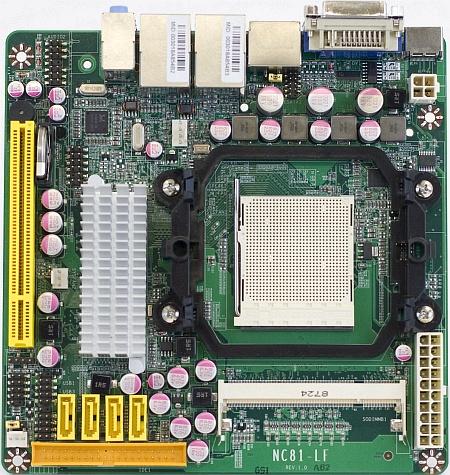
Using the AMD 780G chipset with 128MB DDR2 sideport-memory gives the board superiority against most competition. Jetway installed the weakest Gb LAN solution available, which is a Realtek RTL8111C, a very cheap solution with some drawbacks in performance; and at this price-level it was short-sighted. As mentioned before, there is only a 2.1 audio solution with the Realtek ALC662. Surprisingly, the small heatsink for the 780G chipset is sufficient to keep temperatures at acceptable levels.
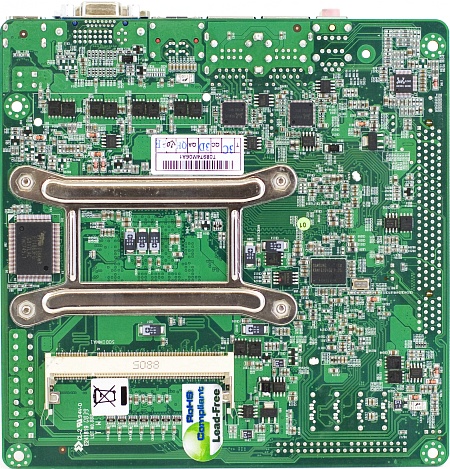
The board features a 3+1-phase VRM, which could work with 95W TDP CPUs, but we strongly advise only to use max. 65W TDP CPUs. Small cases have the disadvantage that airflow is considerably lower compared to a standard tower case. So, the lower your CPU TDP, the better. Due to its highly integrated design many chips are on the back-side of the board. You will find the second SO-DIMM slot also on the backside, so if you are using only one module make sure it's placed on the back-side not to prevent upgrading later.

The package is quite sparse with only one SATA cable, one HDD cable, I/O shield, serial-port cable, manual and driver disc. At this price-level we had expected more.
Testbed:
Jetway NC81-LF (provided by Jetway)
AMD 780G/SB700
CPU:
AMD Athlon 64 X2 3400+ 1.80GHz (provided by AMD)
Memory:
OCZ SO-Dimm Kit 2GB PC2-6400 CL5 (provided by OCZ)
Graphics Card:
Onboard HD3200
Power supply:
ITX 80W external/internal power supply
Hard disk:
Seagate Barracuda 7200.9 80GB (provided by Seagate)
DVD-Drive:
Optiarc AD-7543A
Benchmarks:
Our benches just consist of Lame and 3DMark, but they are enough to get a feeling how fast this platform is. As expected, it's quite similar to the J&W board, but in 3DMark it struggles to keep up; but it still is miles ahead of any Atom solution.
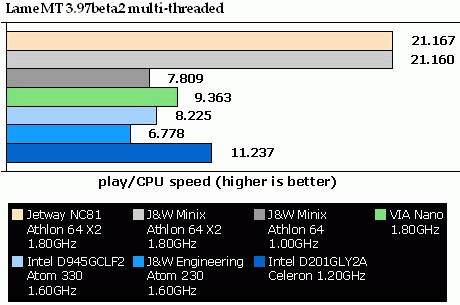
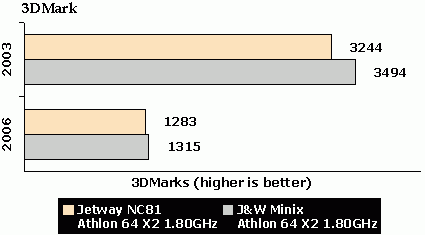
Power Consumption:
As expected, levels are quite the same with the J&W solution with one difference. We wondered why the heatsink was relativley cool compared to the MINIX board, and the reason is while it's a bit slower, it also consumes 8W less. This is not a gaming platform, so there is no need to overdo it and Jetway found a good balance between performance and power-consumption. Because this board only features a PCI slot we could not test with a serious graphics-card.
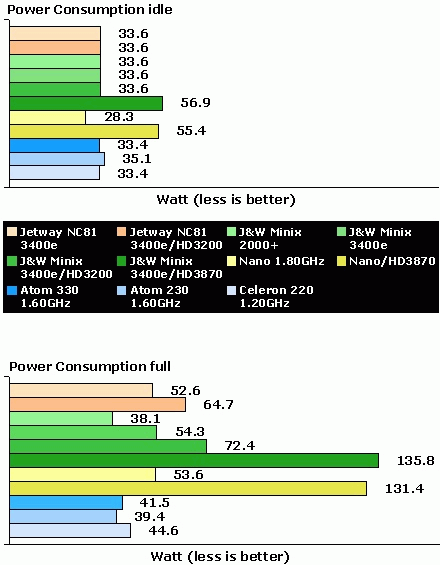
Conclusion:
This board could have been a winner, but the BIOS issues prevented it from going all the way. There are some annoying things like a fan-regulation which was not working properly, Cool and Quiet disabled by default and all the HD3200 overclocking functions will cause corruption on your screen.
The unacceptable issue is the overvoltage of the memory to 1.95V. JEDEC specifies the memory voltage with 1.80V, common settings are 1.85V, but an overvoltage of 0.15V should only be applied by the user. We have mailed Jetway about the issues, and they did fix some of them for our test, but they are not willing to reduce voltage, implement a fan-regulation which will also work with low-powered CPUs and enable Cool and Quiet by default. While most of our readers are familiar with default voltages and how to set a BIOS properly, many people are not.
On the hardware-level there is nothing wrong with this board. It's as fast as you can expect it to be, a bit slower only in 3DMark, but on the other hand keeps power-consumption and heat low. The board is available for about €136,- in Euroland and about $160,- in the U.S. As always, you have to pay a price-premium for mini-ITX, as long as you don't have an Atom dual-core with board which is available for only €67,- but does not support any HD acceleration nor DVI or HDMI. If you can set a BIOS by yourself this board can be recommended, but unfortunately the BIOS issues prevent it from getting an award.
